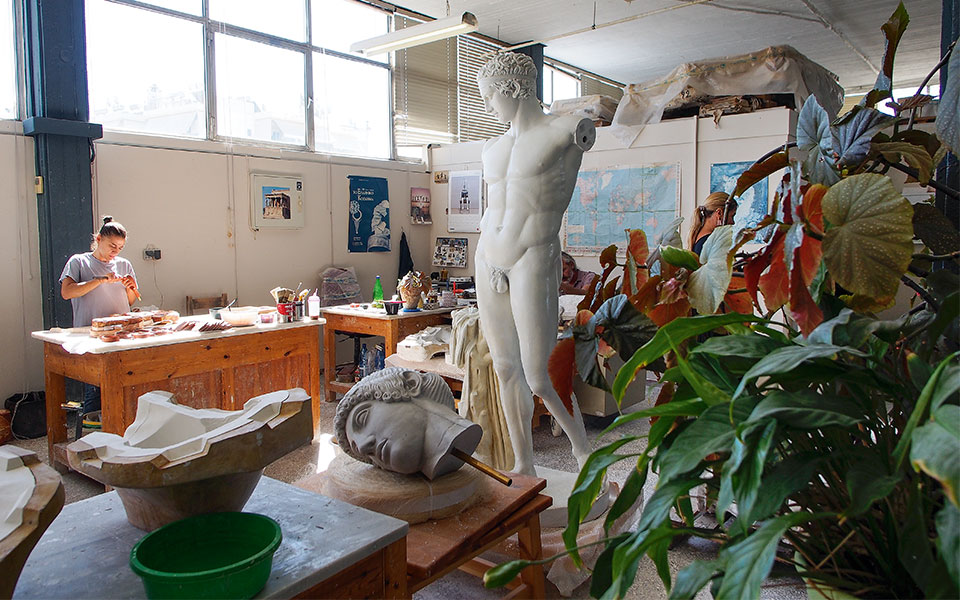In the distinctly industrial district of Piraeus known as Aghios Ioannis Rentis, a creative space where magical things happen has been operating for two decades now.
The exterior of the building does not promise much, and the sign “Fund of Archaeological Proceeds – Ministry of Culture” doesn’t give much hint as to what goes on inside, although the presence of a security camera suggests it might involve something valuable. The building is closed to the public, and we needed special permission to cross the threshold and to be taken on a tour by its “chief magician” in order to discover the secrets of the little-known world inside.
This is the workshop of the Fund of Archaeological Proceeds (TAP), where exact replicas of museum masterpieces are created. The full-scale copies are handmade by talented sculptors and painters from the Athens School of Fine Arts and specialized conservators. Bearing TAP certification, they are sold exclusively in Greek museum gift shops.
Our appointment is set for an autumn Tuesday morning. The sculptor and artistic supervisor of the workshop, Stelios Gavalas, welcomes us with the excitement of a child about to show off his room full of toys. And, indeed, the items on the shelves do look like toys, lined up in profile or facing us, identical, as we walk past.
Cycladic female figurines, flute players, Kouros heads and busts of stern philosophers, all ready to be packaged and sent to museums, schools, exhibition spaces or even private homes.
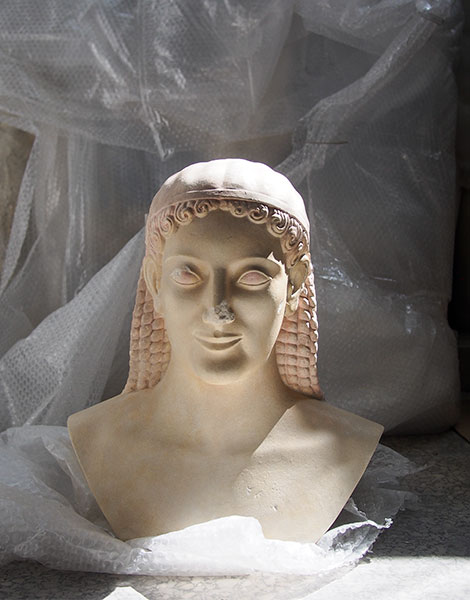
© Dimitris Tsoumplekas
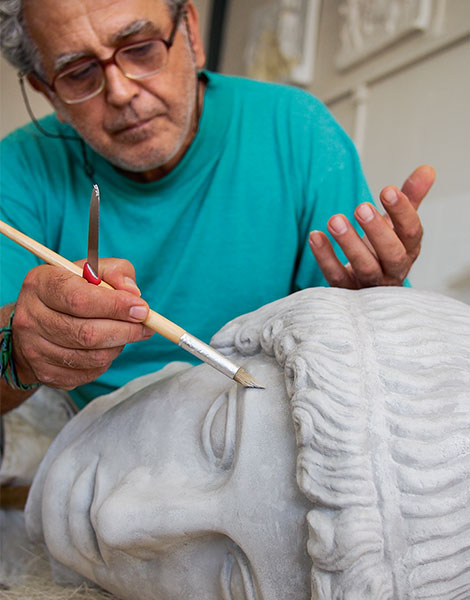
© Dimitris Tsoumplekas
“At the moment, we’re participating in an exhibition commemorating the Battle of Salamis which will be presented in Connecticut, in the USA, with replicas of a series of exhibit items from the Archaeological Museum of Sparta and the Epigraphic Museum in Athens,” Gavalas tells us, indicating a sculpture of a helmeted man, perhaps Leonidas.
We’re in the Model Gallery, the pride of the workshop, where all the prototypes, created from the original molds, are stored. Both the molds and the prototypes, Gavalas explains, are made in the museums. There, Gavalas himself, together with an experienced and specialized conservator will make a mold of an original artwork in silicone or plaster, depending on its state of preservation. Using this mold, two models are created: a “production model,” which will be used to create more molds, and a “patina model,” on which painters recreate all the surface details of the original, including damage and wear, which will be used as a reference for painters in the workshop.
“The casting process is truly wonderful. As if by magic, you create a copy which, with the intervention of a painter, becomes so perfect that you’re often hard-pressed to distinguish it from the original. There’s magic in touching the original ancient artworks, too. It’s no small thing for an artist to touch a work by Phidias, for example.”
From the museum, the models are taken to the Model Gallery where, in addition to contemporary replicas, there are also older “antique” replicas created by the Swiss conservator Émile Gilliéron, the right hand of Sir Arthur Evans, who was tasked with creating copies of the finds from the Palace of Knossos. “Ancient artifacts were very much in vogue then, so while previously replicas were made exclusively for educational and research purposes, or for exhibitions across Europe, these began to serve commercial purposes,” Gavalas explains. The latter are the same purposes that the TAP workshop has served since the 1970s, – although its primary goal always remains the promotion of ancient Greek civilization around the world.
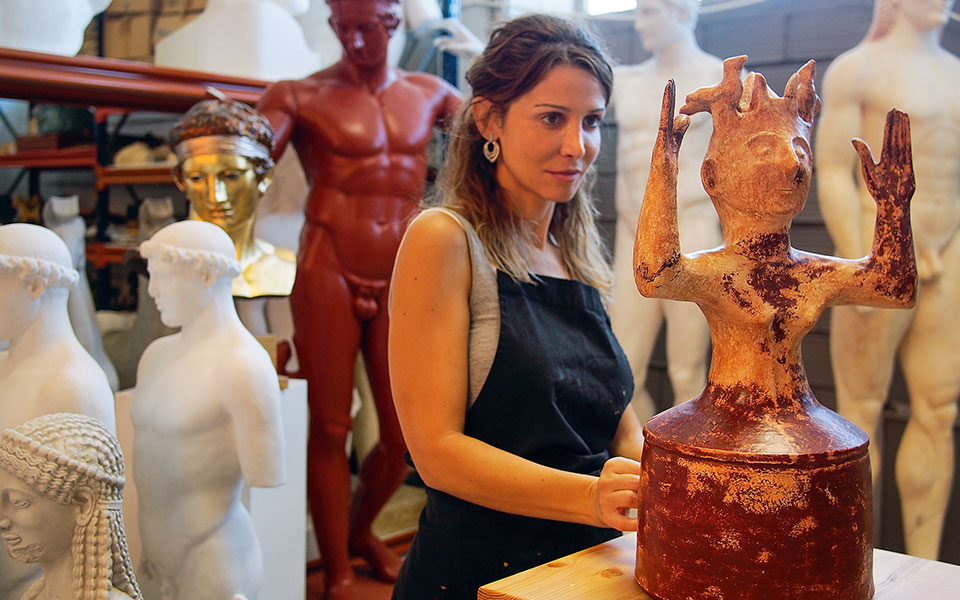
© Dimitris Tsoumplekas
How, then, are copies made from a model? We visit the part of the workshop where silicone production molds are made from the production models. A disassembled Charioteer of Delphi waits his turn on a bench, while Gavalas unlocks a mold to reveal a bust of the Artemision Bronze, which many scholars believe depicts Poseidon.
“Poseidon is my favorite,” he says, his face lighting up. “It was the first sculpture I saw as a child in the Archaeological Museum on a school trip, and it impressed me most of all. Some believe it is actually Zeus, preparing to throw a thunderbolt. I think it’s Poseidon wielding his trident.”
We continue our tour in the production area, where craftspeople fill the molds with plaster (regardless of the material of the original) to make the first copies. As they come out of the molds, most have imperfections, such as air pockets, requiring a retouch. This is what is going on when we enter the room, where we’re greeted by an atmosphere of calm concentration.
Each craftsperson is at their bench, focused on perfecting the imperfect copies which they’ve been assigned: heads, statuettes, Cycladic figurines and sistra (ancient musical instruments also used as rattles). Sotiris Thomakos, a veteran craftsman who has worked in the workshop since 1991, bends over a head of Apollo from Olympia, and corrects his hair with a brush.
“I enjoy the daily interaction with the sculptures. I like to observe their facial expressions, their hairstyles, their clothes. Look, for example, at Hermes’ sandal,” he says, indicating a model of the Hermes of Praxiteles towering next to him. “It’s a very elegant shoe, don’t you agree?” he remarks, chuckling.
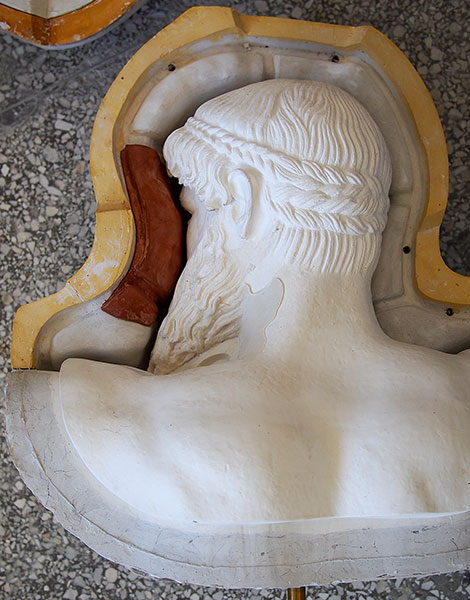
© Dimitris Tsoumplekas
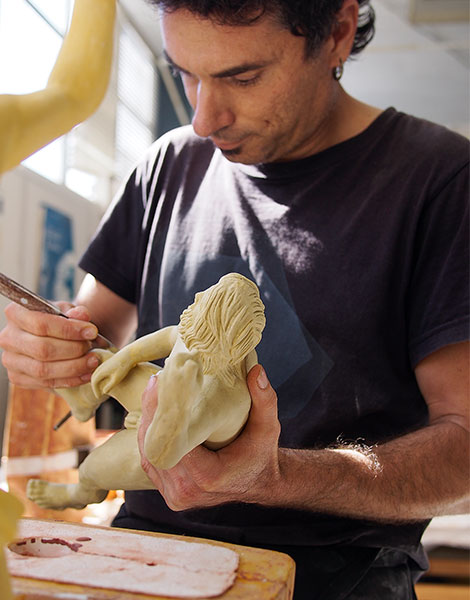
© Dimitris Tsoumplekas
I ask him if, after all these years, he ever gets bored of the repetition involved in his work. “I get asked the same by the kids who work here temporarily, and I tell them I’ve never felt bored. When you enjoy your work, you do it with joy. And I enjoy it, perhaps because I’ve also dabbled in sculpture.”
The retouched copies are checked by Gavalas and a colleague and, if they pass this first quality control, they are transported, depending on their original material, to either the marble patina section or the bronze / pottery section. Here, painters have the task of imbuing the objects with soul – possibly the most demanding task in the entire process – replicating, with the aid of photographs (or occasionally museum visits) the colors of the original, the oxidation, the accretions, and the wear.
In the first room, Pantelis Konstantinou is adding a marble patina to a copy of an inscription with the names of the fallen in the Battle of Salamis from the Epigraphic Museum, destined for the Connecticut exhibition. When I ask what excites him most about his work, he says it’s definitely the contact with the original. “I had the opportunity to visit the museum myself and create the first patina model from the original. It’s a very special experience. Coming into contact with it, it was as if the time between us had vanished.”
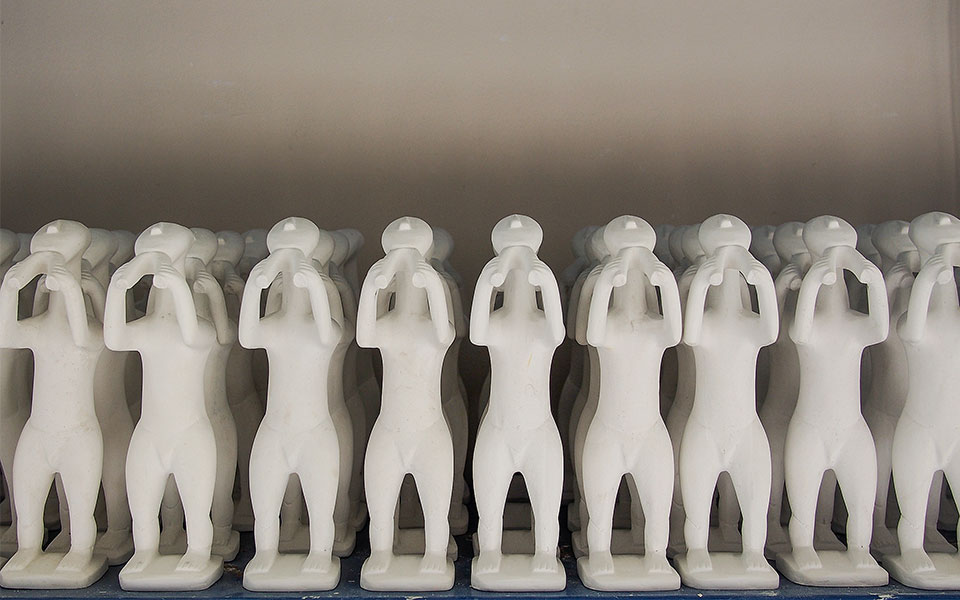
© Dimitris Tsoumplekas
At her bench, Rodanthi Kordi, a conservator specializing in painting, tries to emulate the ripple pattern and the wear of marble on the relief of a sculpture base from the National Archaeological Museum. “For me, the most exciting and interesting thing is that one is challenged to achieve a perfect rendering of the original – which means there’s always room for improvement, making the process a creative one. Perhaps that’s why I always come with an appetite for work.”
Close by, Eleni Kordali is working on a relief recently copied from the Sparta Museum. “While we all work to get as close as possible to the original, the painter always adds their own touch – in the way they approach the work, the way they sense the color palette and the color tones,” she says. “But the most exciting thing for me is the concentration of time on an object, which I must try to convey.”
Eleftheria Klouda, who works in the second patina room, speaks of the effect of time on the objects as well. She’s working on replicating the wear on a clay statuette of a dancer from Crete. “When I paint an object normally, without the wear of time, as this is how we start, I feel that something is missing. It is as if my encounter with these time-worn objects has altered my aesthetic, and I now yearn for disfigurements. I’ve learned to see beauty in wear and imperfections.”
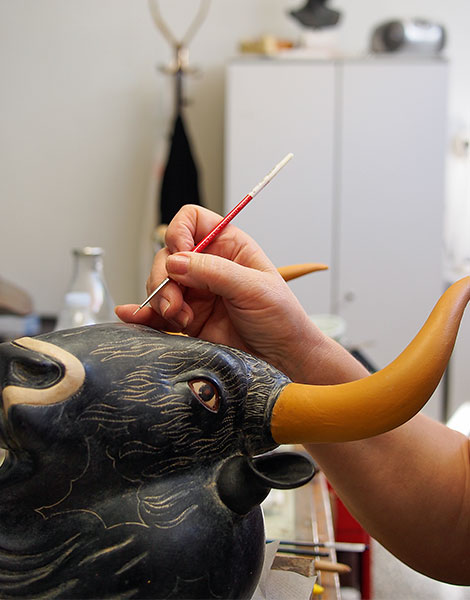
© Dimitris Tsoumplekas
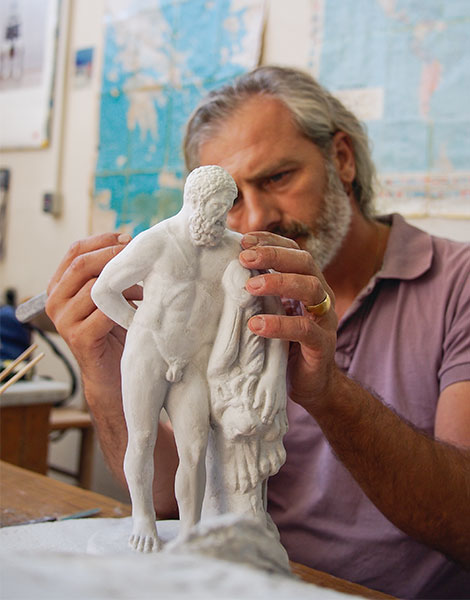
© Dimitris Tsoumplekas
In the patina rooms, after a second round of quality control, the copying process is completed, and this is where our tour ends. I visit the impressive Model Gallery one last time, and, surrounded by heads with broken noses and kouroi with missing hands, I’m reminded of the painter’s observation. There really is beauty in imperfection.
But there’s also great beauty in the perfection of the precise copies made here, and potential historical value, too, as in some cases the older copies are records of the original forms of artworks that suffered subsequent damage over time.
I stand for a while in front of the reference model of the bronze Charioteer of Delphi, which is stored here. It looks as if it has been lifted from the museum, so perfect is the bronze rendering. The same goes for Gavalas’ favorite, the Artemision Bronze, and for a row of deities with raised hands nearby; only an expert eye could discern that they’re not actually made of clay.
I could spend hours here, conversing with gods and heroes, mortals and immortals, but time is limited and the outside world beckons. As I leave the building, I think about how interesting it would be if the workshop opened to the public – at least occasionally – so visitors could better understand and appreciate the mastery with which the original exhibit items were created, by seeing them through the eyes of the painters and sculptors who work so meticulously to replicate them exactly. Perhaps this could even bring us closer to those ancient creators, bridging the centuries.
This article first appeared in the print issue Greece Is Athens Winter 2020-2021 with the title “Recreating the Magic”. The magazine, along with other past issues, is available for order at our eshop.

